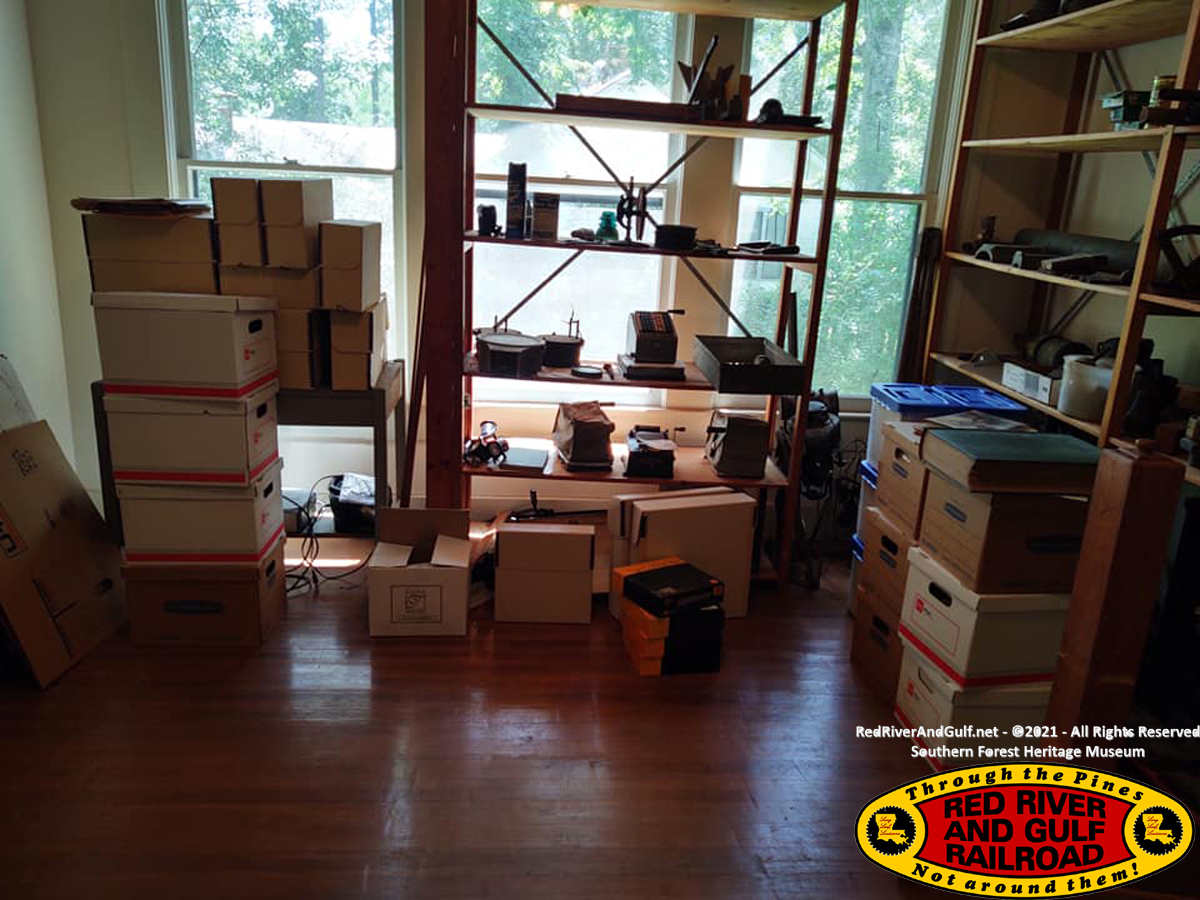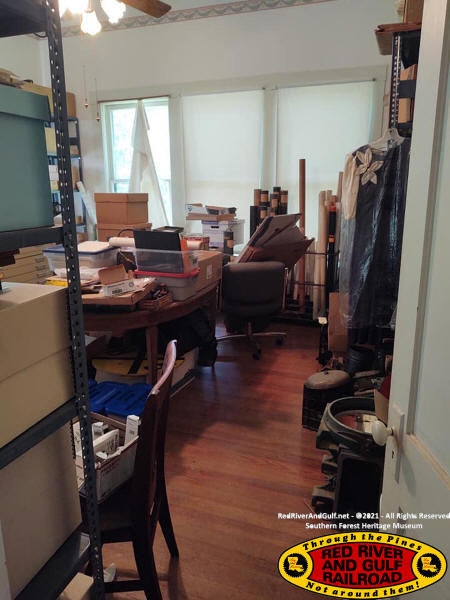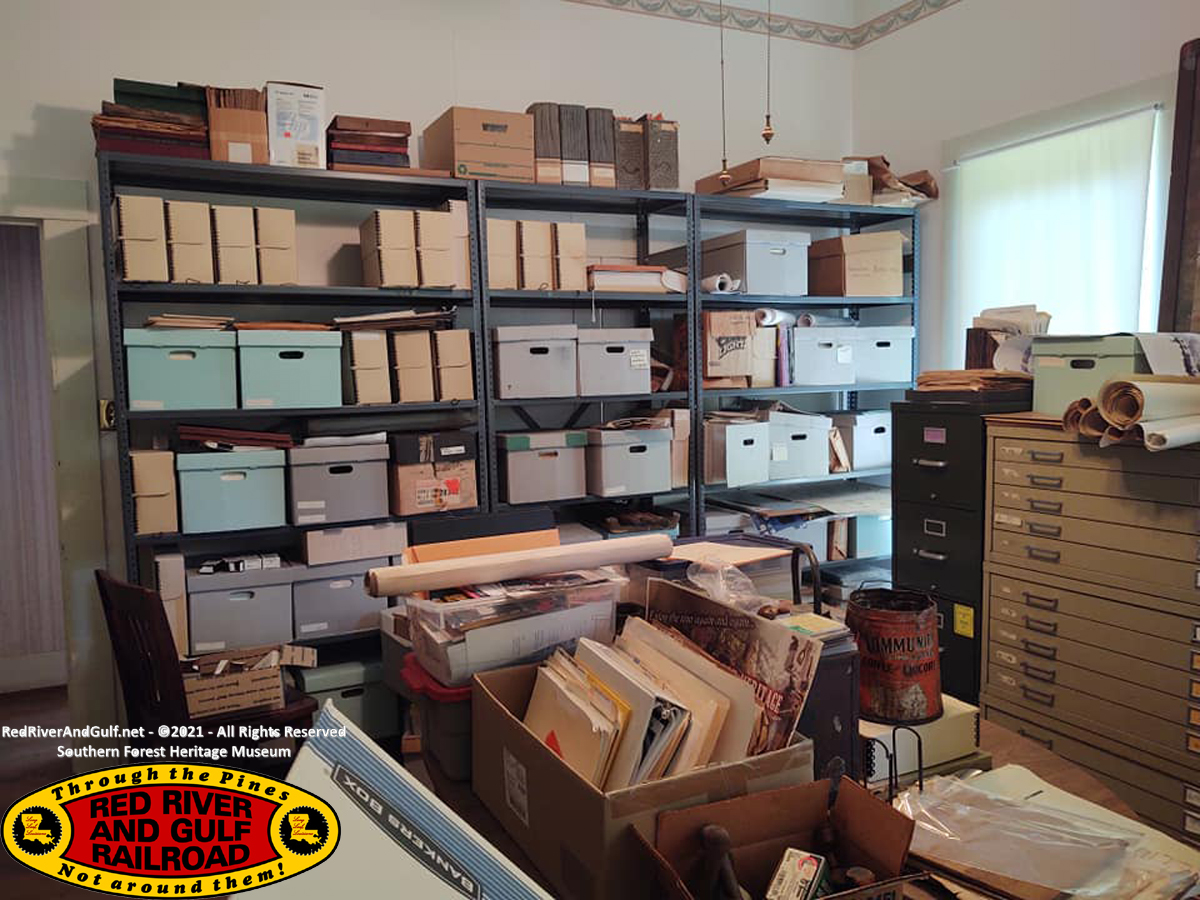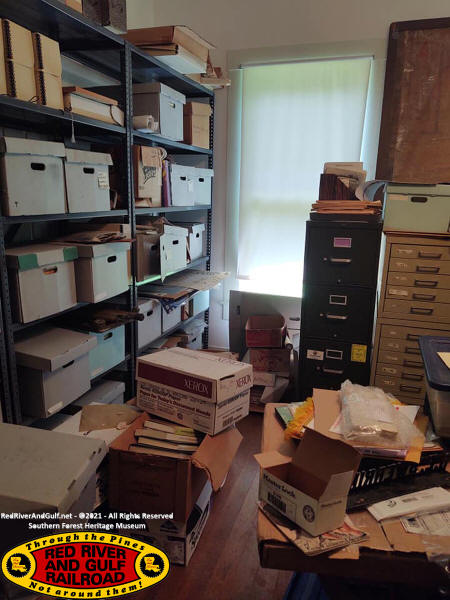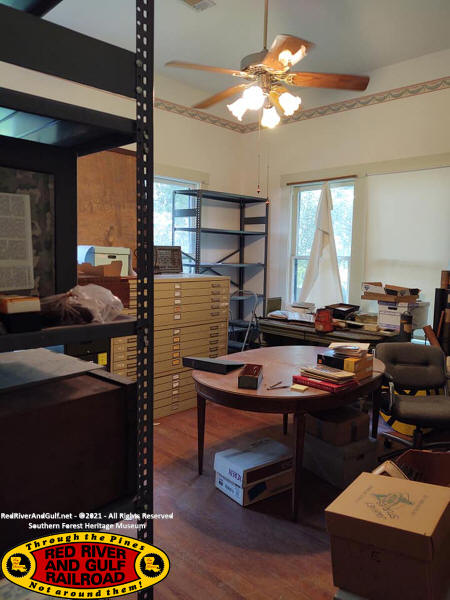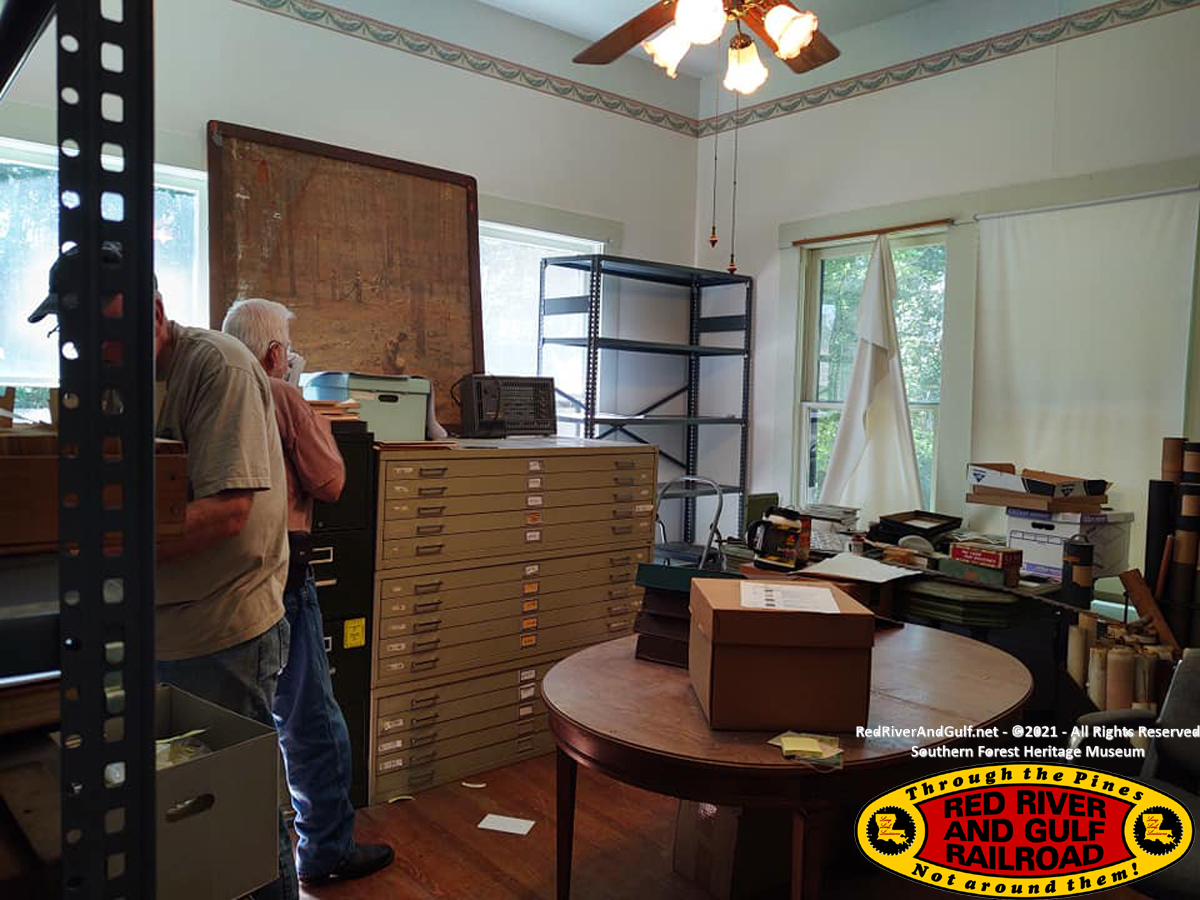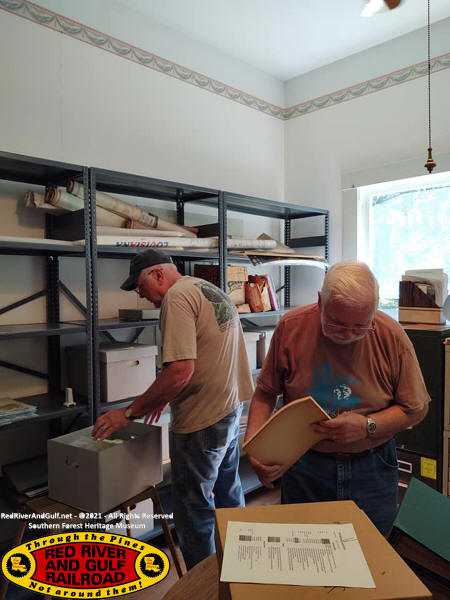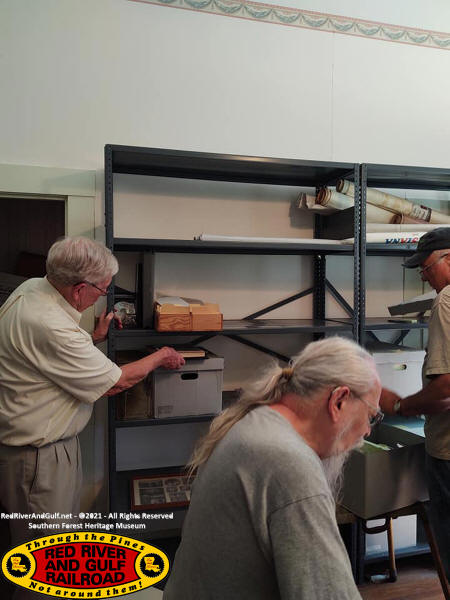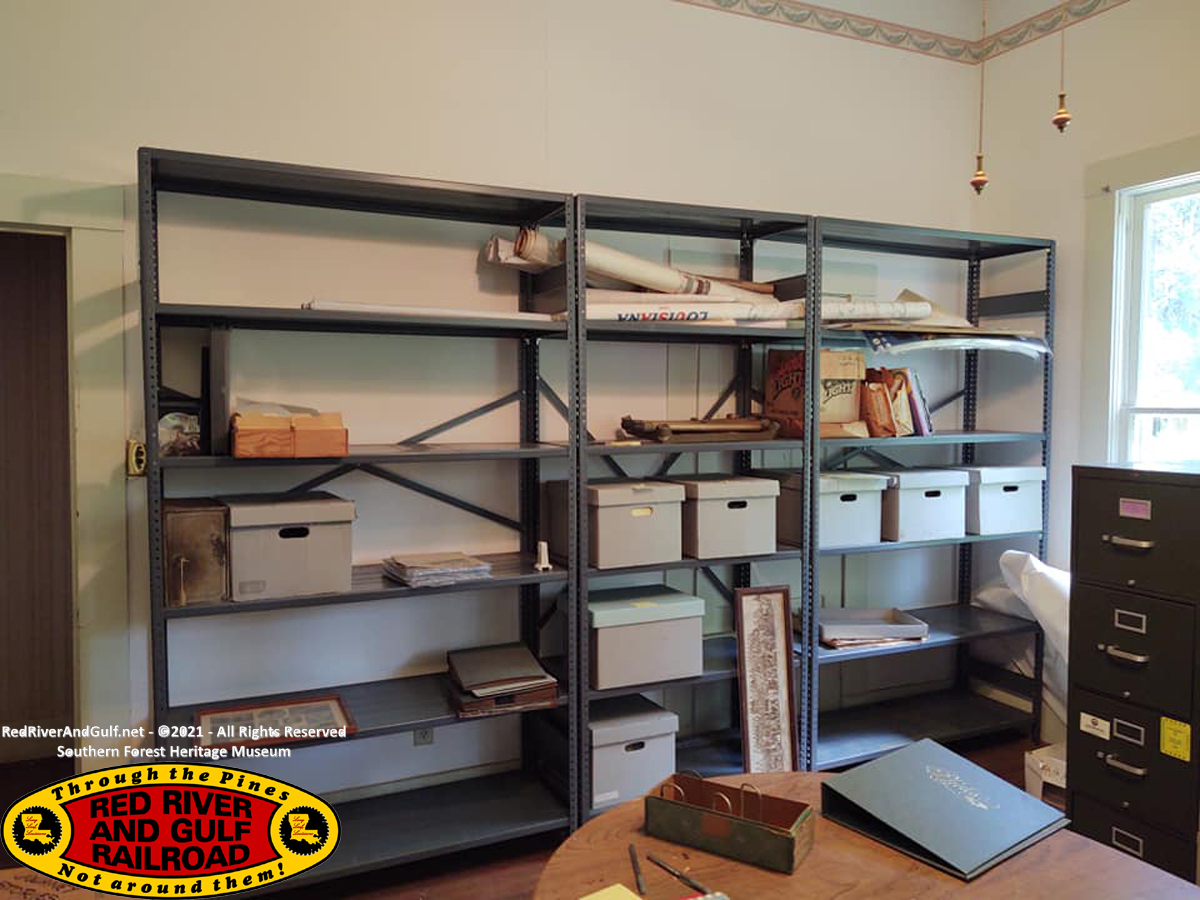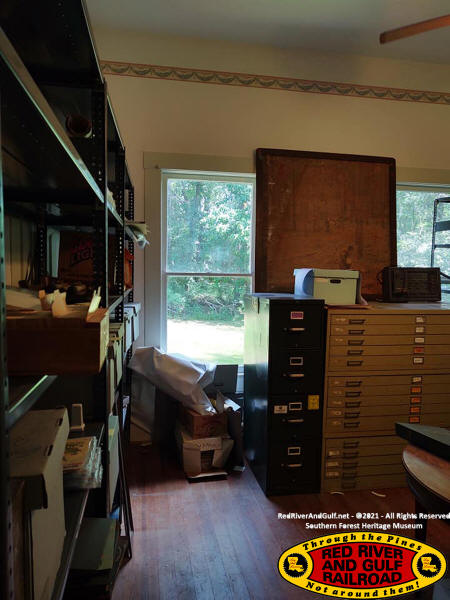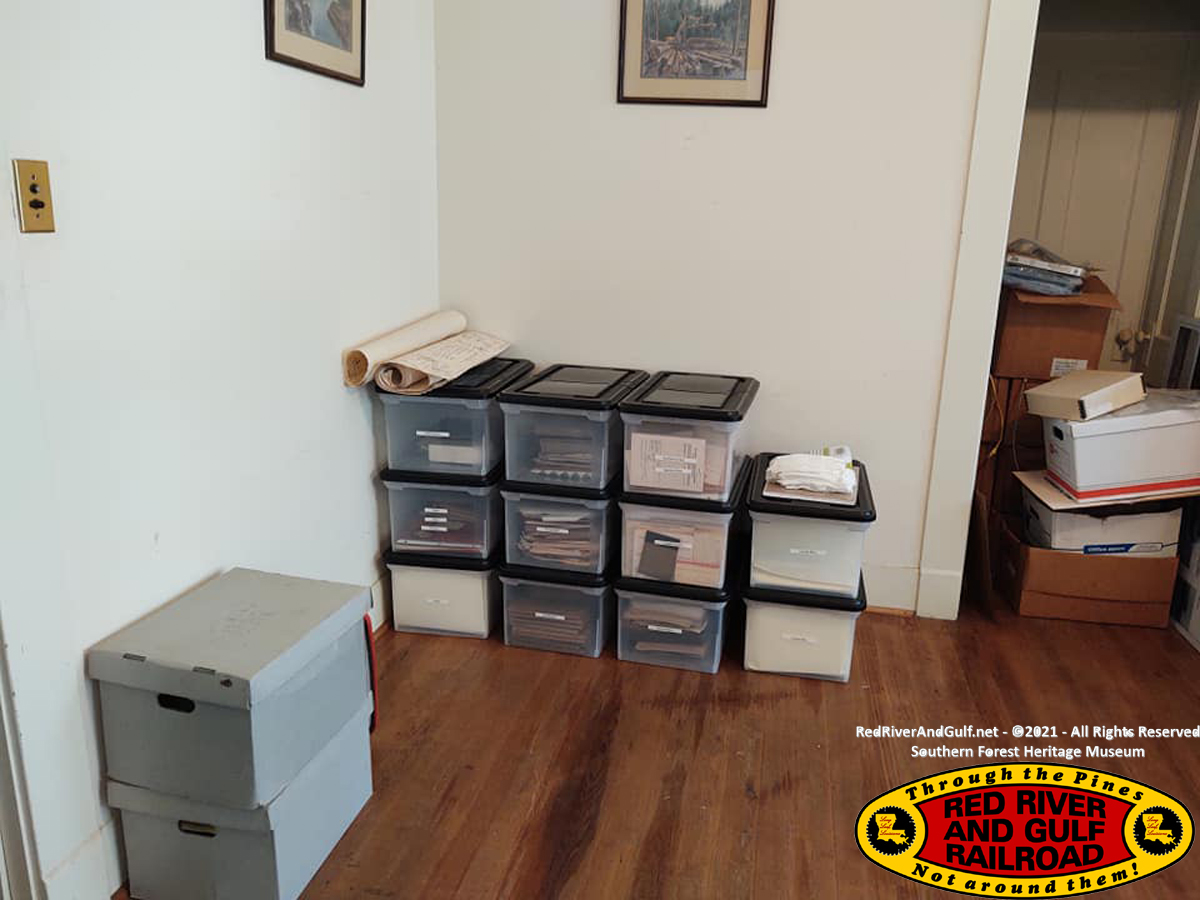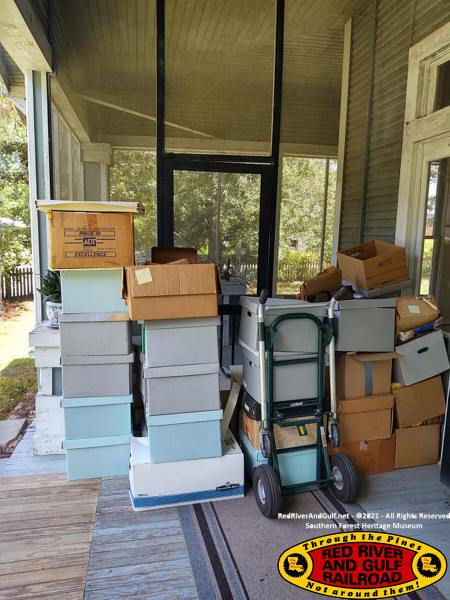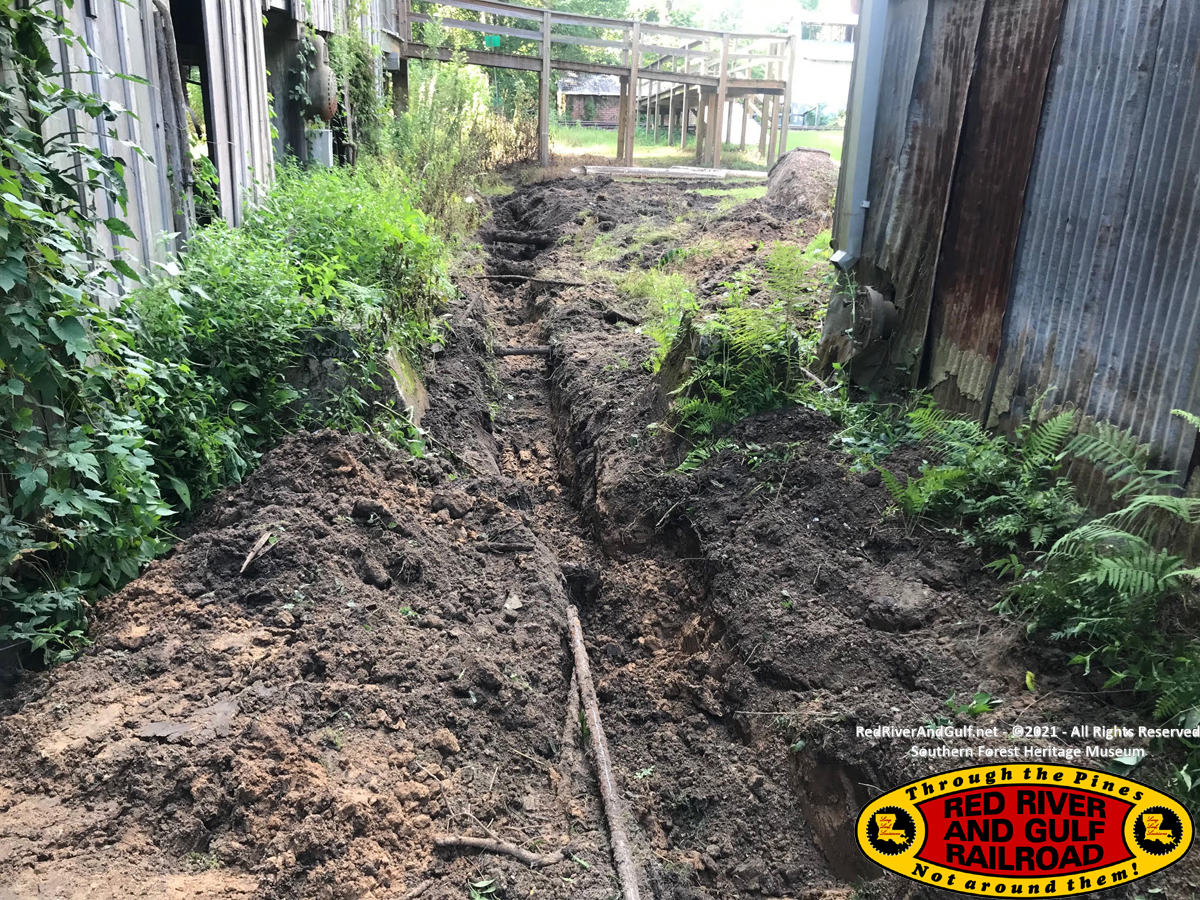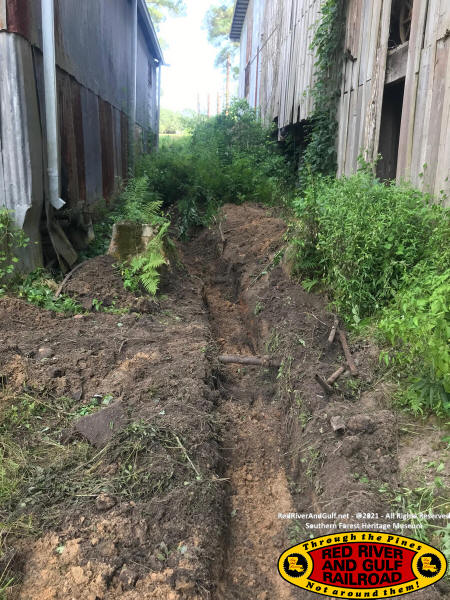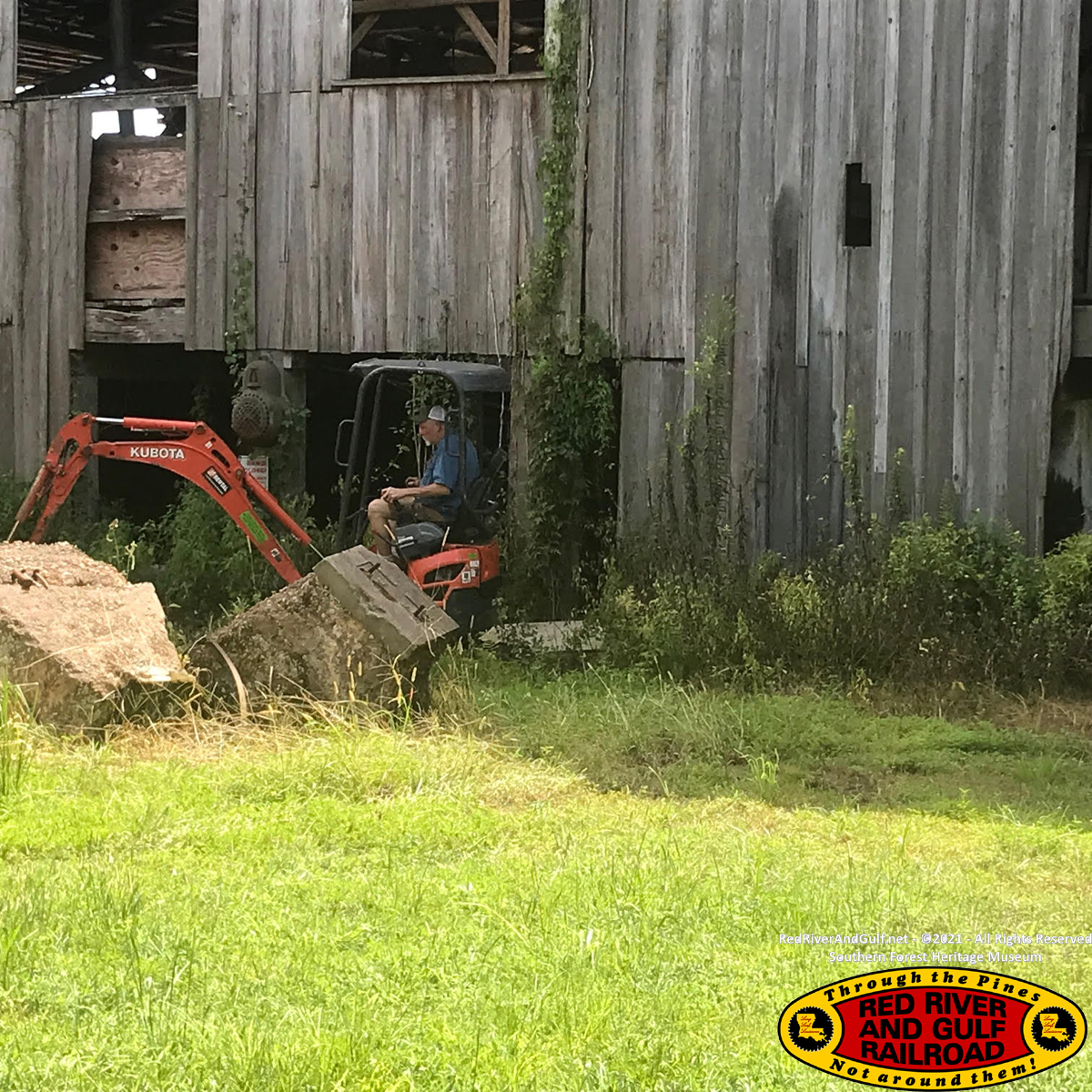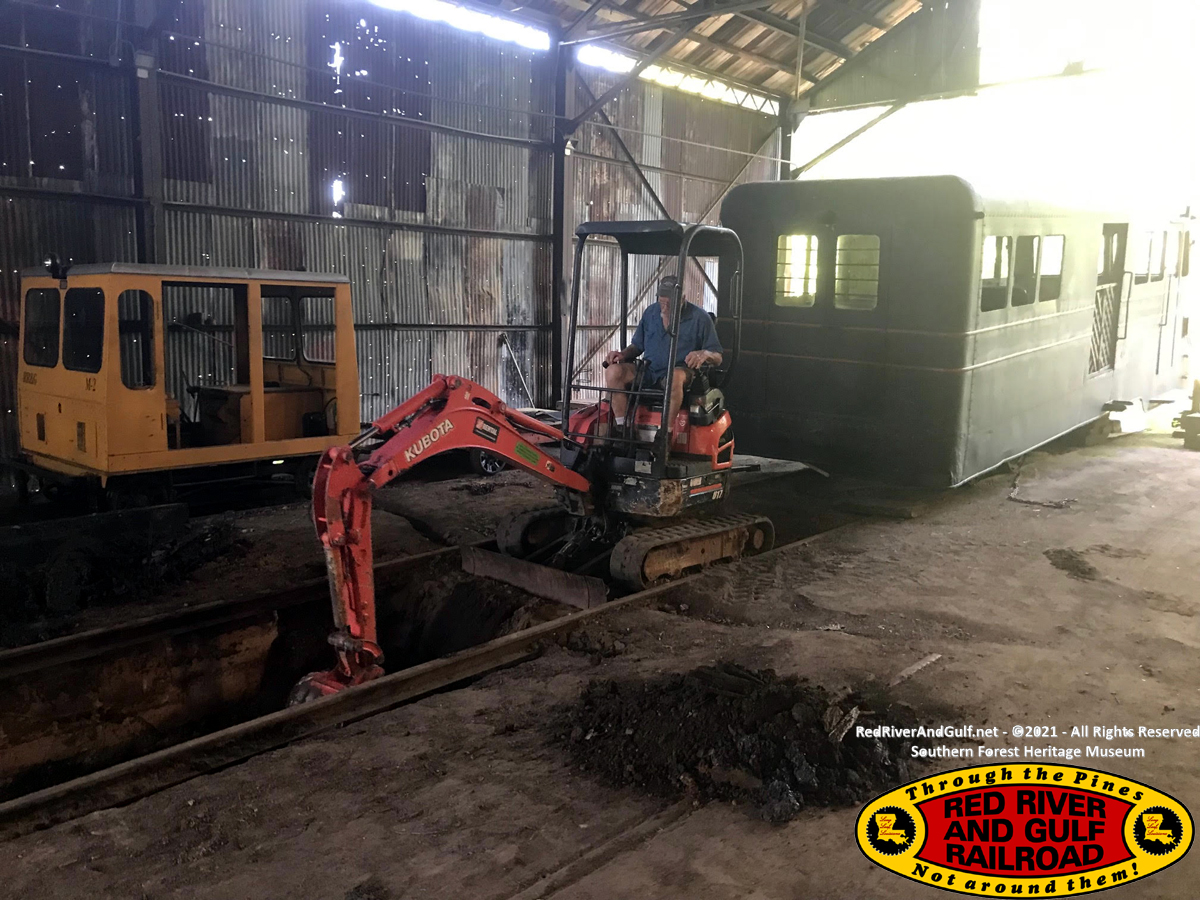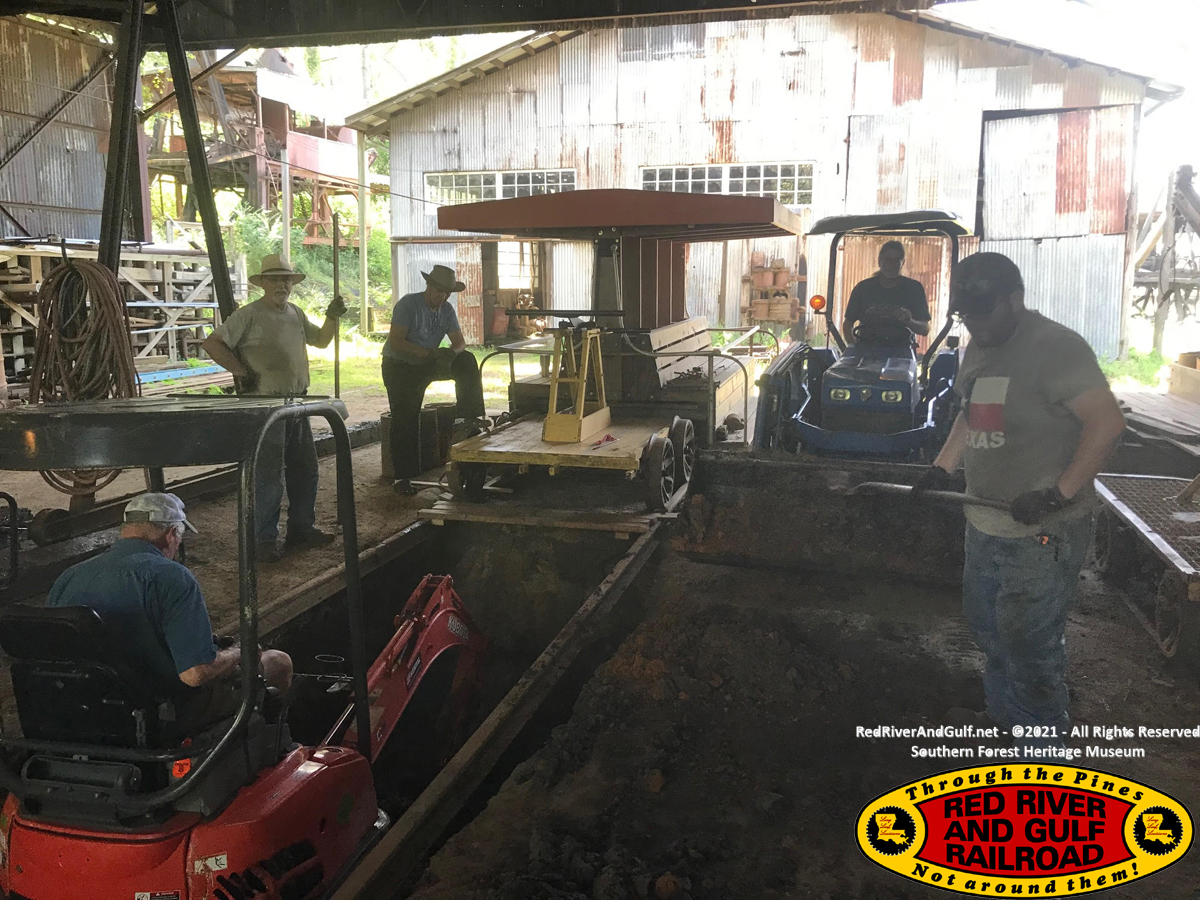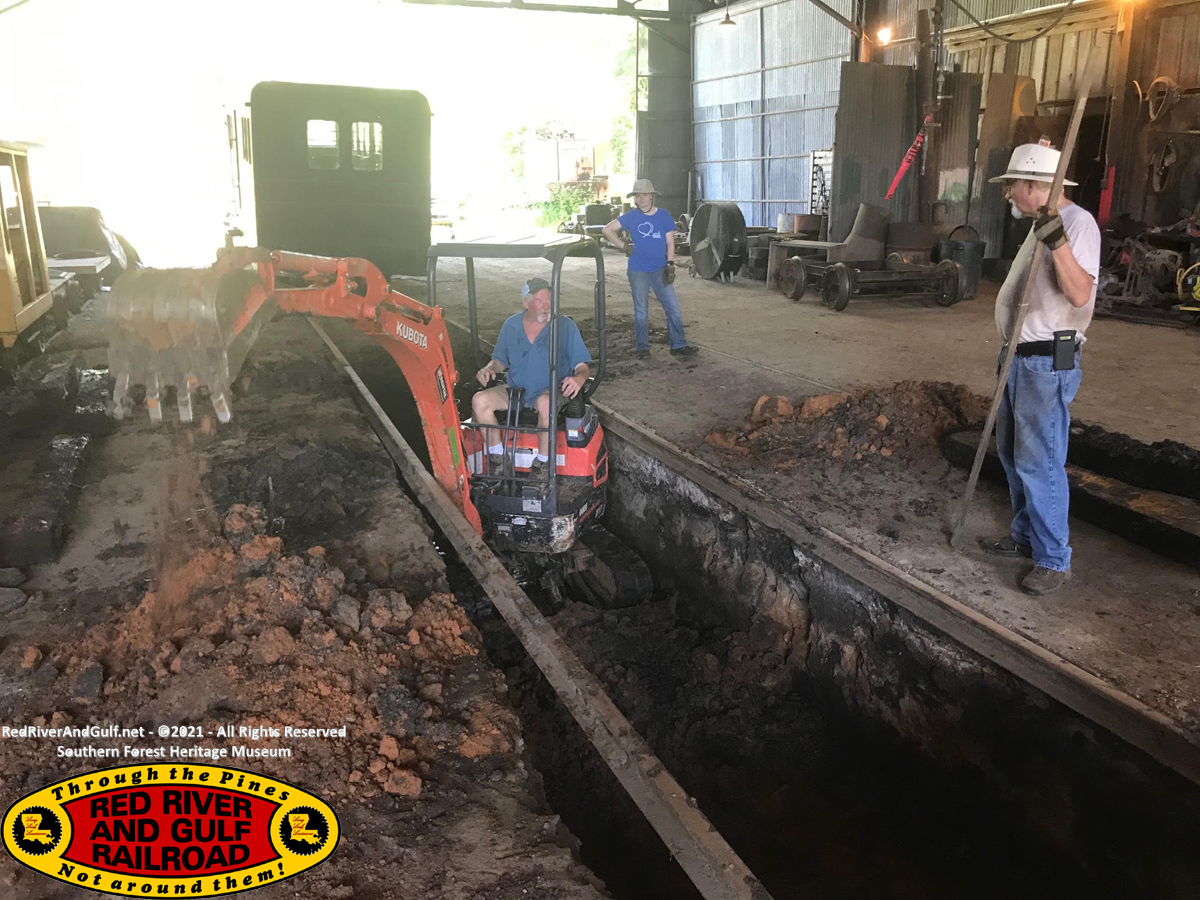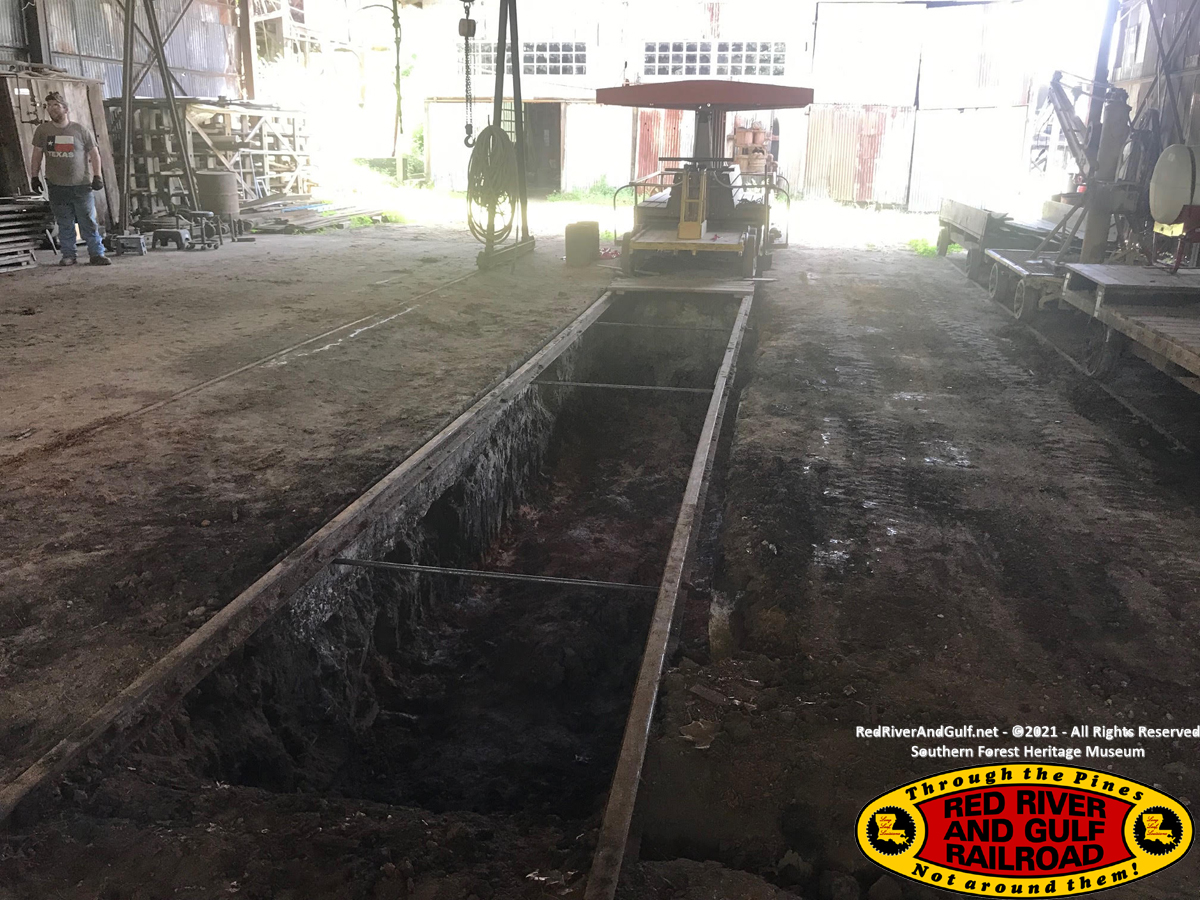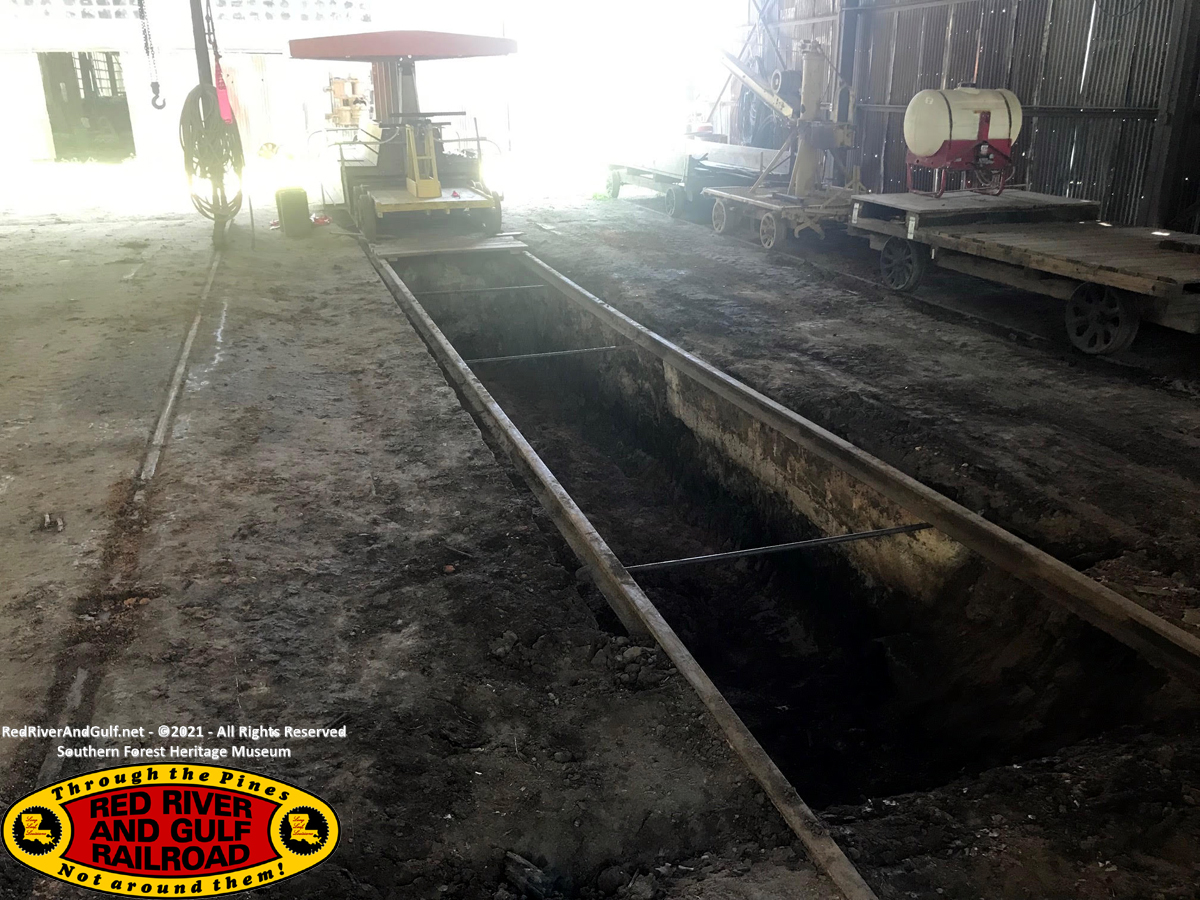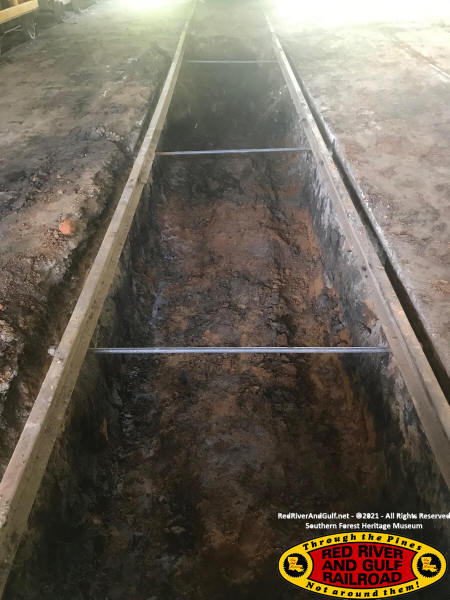|
|
|
Work Session August 21, 2021
To join the fun, contact the railroad at: Work-Session @ RedRiverAndGulf.net (no spaces)
|
|
Team: Everett L. Mike M. Mike B. David H. David H. Angela A. Austin A. Tucker B. James B. Chuck L. Don. F. Ron C. Kristen C.
John M. - -Museum-pertinent archives reboxed in archive-safe boxes and labelled - -Non-pertinent materials in Archives disposed - -Two museum office rooms for the Archives organized and cleaned up - -Drop Pit excavation and prep for concrete pour complete - -Drainage between Planer Mill and Planer Mill powerhouse re-dug and cleaned out - -New belt installed on M8 motorcar - -Temporary truck unloading track panel set up for inbound rail equipment - -Herbicide train ran over main loop - -Colored flags installed on main loop for tie replacement and track maintenance efforts
Thank you to all of our volunteers who came out this weekend! A tremendous amount was accomplished in a single weekend and if we keep up our good attitude and jokes from this weekend, we could start our own “Railroad-Collar Comedy Tour.” Special thanks to Michael Brown and his family for providing pulled pork sandwiches, baked beans, and “gooey butter cake” for the weekend as all of us ate well! Thank you to Mike Miller for loaning a trailer hitch, to Everett for moving a rented mini excavator from Home Depot in Alexandria back and forth to museum, and for David Hearne for being our fantastic mini excavator operator for the weekend.
Friday Friday afternoon after the board meeting and a hearty lunch of pulled pork sandwiches, beans, and cake, courtesy of MB, the prep work for Saturday’s main volunteering day began. The drop pit covers were removed, the plan for the dimensions needed for the concrete pour discussed, and the situation sized up. Using shovels, we determined how many floor timbers (old ties) needed to be removed, how many inches of dirt needed to be removed, and began working with shovels on this effort. Now while we all would have had a good time shoveling out dirt, a plan was hatched to rent a mini excavator for the day that would be small enough to get in the pit to excavate the dirt in quick order. A collection was taken, a trailer hitch procured, a plan devised, phone calls made, and we set up Saturday to be big day being efficient with our time.
Using Mike Miller’s trailer hitch, Everett pulled the mini excavator from Home Depot in Alexandria down to the museum. This equipment was the perfect size and small enough to fit in the pit itself. David Hearne was our mini excavator operator for the day, and he did a fine job. A small dirt ramp was made for the mini ex to enter the pit and the gauge bars removed for ease of movement. With Mike Miller operating the museum tractor, Andrew, Dave, and I worked to remove the needed dirt, made measurements to ensure the needed height clearance to the bottom of the rail (48 inches), and hauled the dirt to our designated dirt storage pile. Much of the dirt had good red clay in it, making it a very valuable resource for future projects. Everett, Angela, and MB replaced the belt on the M8 to return the motorcar to operating service. By lunchtime, the drop pit excavation was just about done.
After lunch, the final dirt removal was finished in the drop pit, and we began cleaning up in the engine house to collect the fresh dirt from this effort. David then maneuvered the mini ex to the Planer Mill to dig out and clean out the drainage ditch in between the planer mill and the powerhouse. David did another fine job here. Water was flowing over a wooden structure beam and by cleaning out this drainage, this routes water away from underneath the planer mill and through a proper drainage ditch. Everett then cleaned up the rental trailer and the mini ex with the water house at the engine house. In fact, a discount on the rental cost was given when we returned it early and in good, clean shape.
During the afternoon, Mike M. and MB used the museum forklift to position ties and rail near the main loop on the sawmill concrete pad to prepare an easy unloading spot for trucks bringing in inbound rail equipment. The volunteers working in the Archives had been organizing and cleaning out the two rooms of archive materials down at the museum office. Tucker, Angela, and Andrew loaded up the museum tractor bucket and made several trips to the dumpster to dispose of thoroughly vetted material that was not archivable, not pertinent, and unneeded at the museum. We filled up the dumpster completely before we could finish disposing of unneeded materials. Rachel, the Archivist, prepared a thorough report just on the Archive volunteer efforts.
On Sunday, the plan was to use colored engineering flags to make a color-coded system of flags next to the maintenance and repairs spots on the main loop track and the engine house leads. M8 was fired up and Everett, Angela, and Andrew set out on the main loop. This was an opportunity for a track inspection and practice operating cars. M2, however, was a stubborn starter. The engine was checked, and after cleaning the battery terminals, the car fired up and the engine roared to life. A poor battery connection with some junk on the battery terminals was determined to be the culprit. With M2 running, the sprayer car was pulled around, a batch of herbicide solution mixed up, and the entire loop and engine house leads received a herbicide spray.
The next volunteer sessions are Labor Day weekend September 4-6 and September 18-19. We’re cooking with fire and enjoying our time at Longleaf. There’s opportunity for everyone to help in any way they can. Won’t you join the fun?
|
|
|
|
Archives Volunteer Day
Volunteers: James Barnett, Chuck Lind, Don Formanek, Ron Chance, Kristen Candiloro, and John Marks, Jr.
This past weekend was the first volunteer day made to work in the SFHM archives. A big thank you for those that did come Saturday to help out, either organizing or loading the tractor for the garbage bin. Our goal for the archives volunteer days is to get the archives all re-boxed and labeled for the upcoming move to the new archival building.
The archives at SFHM were in very poor shape, concerning being organized or stored safely. Many of the archives were stored in Banker Boxes, which are the typical go-to box for “old documents,” which sadly this is a myth unless these boxes were stored in climate-controlled areas and are replaced about 1-2 years. There had a been a few attempts in accessioning (creating a catalog and giving assigned numbers to archives) done in the past—specifically the year 2002—and even a couple of archival boxes used. This helped out in letting the volunteers know exactly what was in there and not have to worry about taking anything out yet. Most archival boxes are “safe” for about 5 years and then need to be replaced, so needless to say if they had been put into the archives in 2002, five years is well past, and the documents inside will be moved into new ones eventually!
The volunteers started out by 9:30 AM in pulling boxes and objects from shelves or stacks of paper off the large dining room table to be sorted and placed in either a large tote box made from PP #5 material or objects placed in new banker boxes. To our surprise while we found that various of the boxes contained financial records of the museum from the 1990s, old brochures, random documents from unrelated places in the United States, machine order catalogs from the 2000s, and forest fire prevention education plans and records. These materials were deemed obsolete for the archives either by myself, Chuck, or Dr. Barnett and have been thrown out or put aside to give away.
Many of the volunteers left a little before noon but we had made even more progress than I had hoped. I figured the supplies I had purchased and the sheer amount of stuff in the archives, we would only be able to clear away the dining table and one shelf, maybe two. But instead, we cleared four shelves out of six, the dining table and the floor! We had eleven tote boxes filled and ten Banker Boxes of books or objects. We did run out of tote boxes, so there are a few old banker boxes with sticky note labels that are waiting to be stored elsewhere. Once everything has a nice storage box to be placed in, our next volunteer days’ goals will be:
· -Creating a catalog of what we have in terms of the broad collections that have been created for the SFHM archives (Crowell Lbr. Cos, RR&G, Railroad Misc, Lumber Misc/Machine catalogs, CCC, WWII/Camp Claiborne, Naval Stores, Forestry, SFHM Misc, and Misc) · -Organize the map box · -Create a catalog and a sign-up sheet of the private libraries of SFHM · -Labeling objects · -Moving the archives to the new building
|
|
Working on the Archives
|
|
|
|
Working on the Archives
|
|
Working on the Archives
|
|
|
|
Working on the Archives
|
|
Working on the Archives
|
|
|
|
Working on the Archives
|
|
Working on the Archives
|
|
|
|
Working on the Archives
|
|
Working on the Archives
|
|
|
|
New drainage at Planer Mill
|
|
|
|
|
|
Clearing drainage at Planer Mill
|
|
|
|
Finishing the demo of the old pit
|
|
|
|
|
|
|
|
Dave makes quick work of the project
|
|
|
|
|
|
|
|
|
|
|
|
Done!
|
